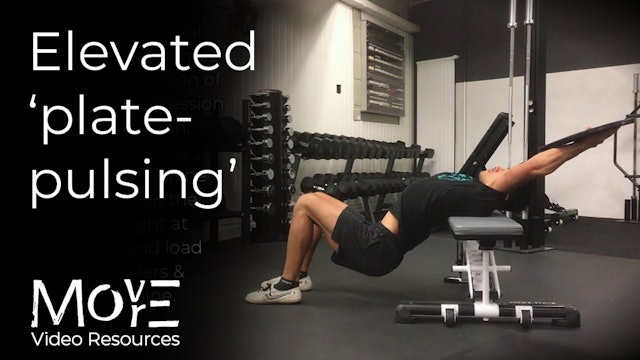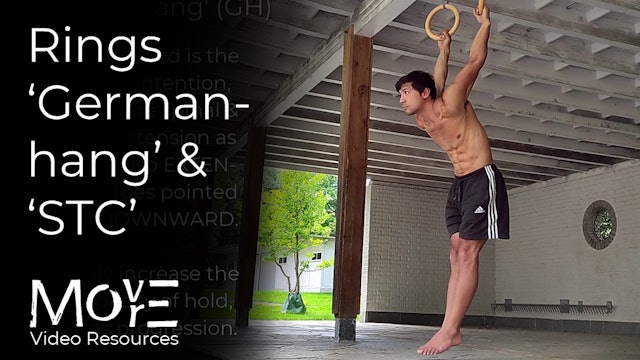Shoulder-mobility (range-development)
A “COMPLEX” SUBJECT:
Restrictions to the range of shoulder-movement, and therefore developing them, can be as complex as the shoulder-articulation itself; relative to the ball & socket joint of the hip, for example, the humeral-head (i.e. of the upper-arm) sits extremely shallow in the glenoid fossa of the shoulder, supported entirely by an array of connective and muscle-tissues. Whilst ligaments & the cartilaginous labrum form its primary stabilization-structure, essentially securing it in place, the four small muscles of the ‘rotator-cuff’ do so likewise further to facilitating fundamental arm-abduction & medial/lateral (internal/external) rotation.
Beyond these smaller-muscles, larger ‘prime-movers’ such as the major pectorals, the lats, deltoid, and even biceps & triceps are also intrinsic to movement of the shoulder in different directions, therefore affecting its available range. Not least, the two “wings” of the scapulae (i.e. shoulder-blades) which form the posterior shoulder-girdle – itself providing the attachment to many other groups of muscles – are intrinsically connected with the shoulder, both allowing for, and potentially restricting, their movement & therefore of the arms in space.
LEARN MORE (subscriber-only):
https://drive.google.com/file/d/1PVYnsEorLIUWz7s72vazs5Rd9_Qh2LQY/view?usp=drive_link
-
Active shoulder-extension
THE WHAT:
An open kinetic-chain context (i.e. the arms are free to move in space) for both range-development and strengthening of shoulder-extension. Whilst closed kinetic-chain, floor-based contexts (such as the 'AG support' and 'Table' holds) do also develop the same range, they express compara... -
Fundamental hanging contexts
THE WHAT & HOW:
A simple reason for the perspective and practice of hanging is that, as with the fundamental resting or 'passive' squat, it is a movement pattern built into our physiology which becomes not only neglected, but culturally & socially discouraged as we become adults.The disuse of s...
-
1-arm 'passive' & 'active' hang
THE WHAT & HOW:
The two ends of the overhead-pulling kinetic chain are the hands (connecting the arms to the anchor-point), and the scapulae (connecting the arms to the body). Developing the 'Passive' and 'Active' hang unilaterally (i.e. 1-arm), follows the same progression perspective as bilater... -
Culturing movement habits: Hanging at home
THE WHAT:
Hanging is a movement habit that requires culturing. The benefits of regular hanging are many, but primarily related to decompression of the shoulder & improving the quality of its connective tissues and identifying & releasing excessive resting muscle tone around the lumbar spine.For...
-
Prone crossed-arm stretch
THE WHAT:
A simple & accessible form for loaded stretching of the posterior shoulder & scapular musculature. It is particularly valuable to practice in combination with efforts to develop 'neural-drive' (i.e. ability to intrinsically move) in the scapular musculature with the likes of scapular ro... -
Shoulder-flexion & extension stretches
THE WHAT & HOW:
Two simple bodyweight stretching contexts for both diagnosing & spending time in the end-ranges of shoulder extension & flexion. Their low intensity means that they can be practiced as frequently as desired (up to multiple times, daily), however this also means that, rather than d... -
Overhead (OH) shoulder ROM and stability routine
THE WHAT:
A basic overhead (OH) shoulder-stabilisation and range-of-motion (ROM) sequence to help keep your shoulders in their sockets. For those who are extremely hyper-/flexible, working with rotations WITHIN the end-ranges will help to build STRENGTH there (ie. 'stability' in this context') to... -
Anterior-shoulder chest & RC stretches
THE WHAT:
Simple stretching variations for regular use toward mitigating & reversing kyphotic posture. Whether through lifestyle or practice habits, 'kyphosis' is characterised by excessive hypertonicity in the anterior musculature of the upper-body, translating to general "tightness" in both 'pr... -
Yuri's shoulder mobility-drill
THE WHAT:
A simple "bang for buck" prehabilitation & mobility-development drill originally sourced from performer, hand-balancer & teacher Yuri Marmerstein. The band-resisted movement dynamically explores the ranges of both internal & external shoulder-rotation (IR/ER), notably in positions betwe... -
Elevated plate pulsing
'OPEN-SHOULDER' POSITION vs. 'SHOULDER-MOBILITY':
A loaded open-chain tool for developing mobility in the thoracic spine & 'open-shoulder' position. One thing which should be understood from the outset is that 'open-shoulder' refers a FORM (or, rather, and ANGLE under the armpit between your tor...
-
Floor 'Butcher's block'
THE WHAT & HOW:
A fundamental & easily accessible context for development of the 'open-shoulder' position (facilitating overhead arm-flexion range) in a loaded, isometric context. As part of its form & execution, the 'hollow-body' position is also drilled & conditioned in a prone position, resist... -
End-range shoulder-circles
THE WHAT:
A highly accessible and multi-purpose context for shoulder prehabilitation (so shit doesn't happen), rehabilitation (when shit has happened), range-development, end-range stabilization, building "neural drive" in the scapular musculature (i.e. allowing for maximal contractions to put th... -
Deficit prone shoulder-dislocation
THE WHAT & HOW:
A 'deficit' variation of the classic 'Prone shoulder-dislocation' which permits a slightly increased overhead range-of-motion (ROM) for, particularly when using a weight-plate on the stick for the floor-version which can often reduce ROM/cause you to "relax" in the bottom position... -
Standing & lying shoulder-dislocation
THE WHAT
The ‘Shoulder-dislocate’ is a convenient & easily-scalable drill for the development of general shoulder-mobility and range in shoulder-extension (reaching the arms behind the back). Predominantly drills which are designed to be progressively-overloaded (i.e. incrementally increasing the... -
The fundamental 'AG support'
THE WHAT & HOW:
The 'AG ('Artistic gymnastics') support' position allows for the development of strength to PULL and support oneself in the ranges of shoulder-extension. This is as opposed to the more passive range which is develop in shoulder-extension contexts, such as the 'German hang' positio... -
AG Support to Manna Progression
THE WHAT:
Progressive tools for developing the strength of straight-arm PUSHING in shoulder extension. On the one side of the progressive scale we begin with the fundamental frame of 'AG Support', whilst on the other we look toward the 'Manna'.These tools are designed to attend to both the "clo...
-
Pseudo ‘German-hang’
THE WHAT
The ‘Pseudo German-hang’ is a simple, open kinetic-chain loaded-stretch which develops the strength & range of the shoulders in extension. Due to the standing & forward-folded position, it also elicits a strong stretch across the posterior-chain, namely along the lower-back and hamstring... -
'German-hang' (GH) & 'Skin the cat' (STC) development
THE WHAT:
The 'German-hang' (GH) and 'Skin the cat' (STC) are hanging shoulder-extension forms, meaning that the bodyweight is suspended from an anchor-point (here a bar) with the arms BEHIND the mid-line of the body. The main difference between the two variations is that the 'GH' emphasises an i... -
Rings 'German-hang' (GH) & 'Skin the cat' (STC)
THE WHAT:
The 'German-hang' (GH) and 'Skin the cat' (STC) are hanging shoulder-extension forms, meaning that the bodyweight is suspended from an anchor-point (here, the gymnastics rings) with the arms BEHIND the mid-line of the body. The main difference between the two variations is that the 'GH'...





















